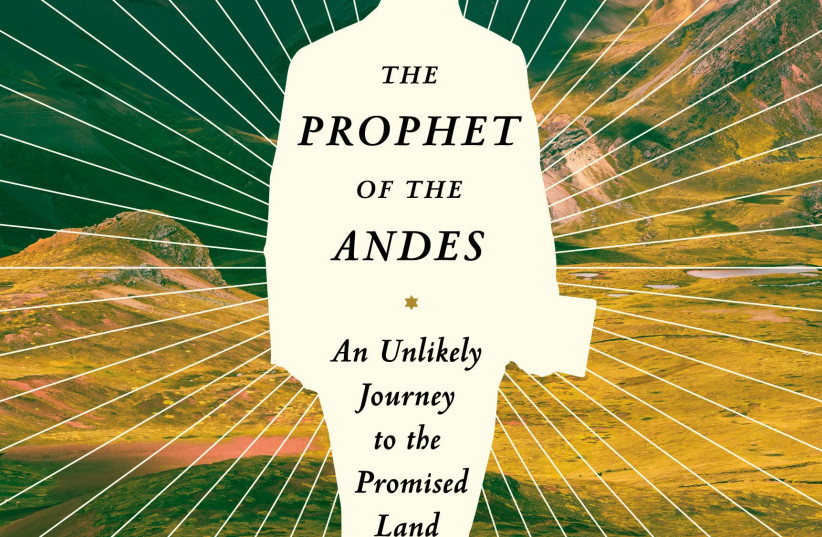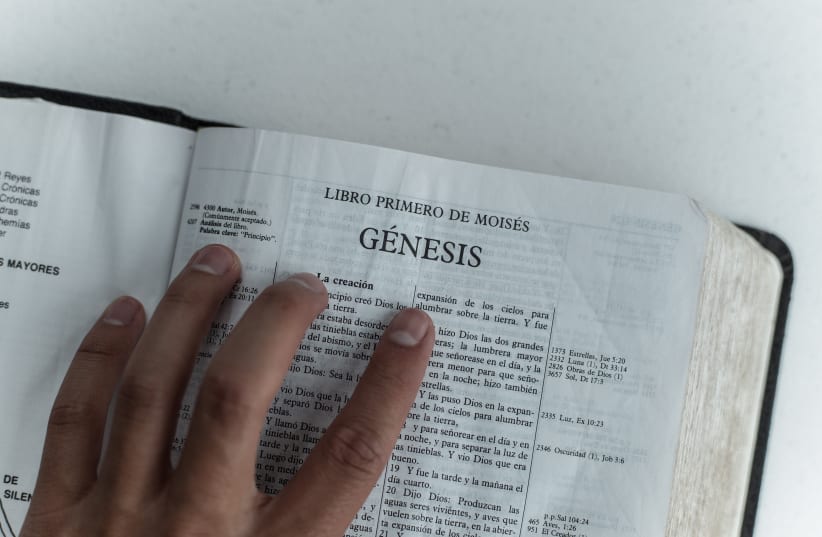Segundo Villaneuva was a fanatic. His obsession was to live according to God’s commandments, which, he believed, are found in the Hebrew Bible. When the Peruvian concluded that the Christian Bible and its doctrine contradicted those Divine orders, his odyssey eventually took him to its logical and inevitable conclusion.
At 17, Segundo, preparing to avenge his father’s murder, inherited a trunk from his dad with a Bible inside.
“What was a Bible doing in his father’s trunk?” asks author Graciela Mochkofsky, who spent almost 20 years doing research for his book The Prophet of the Andes. “There were no Bibles, or should be no Bibles in a Catholic house. … A Bible in one’s house was not illegal, but it was an act of arrogance; it was heresy, a sign of audacity or insanity.”
In Segundo’s church, the priests would read them the Bible, but in Latin, incomprehensible to the parishioners.
He began to read the Bible (it was in Spanish) and thought God was speaking to him through the book.


When he read the Christian Bible, he found discrepancies with what he had read in the Hebrew Bible and differences in the various Gospels.
He came to believe that the priests had violated one of God’s commands – not to make “graven images,” for to him, the statues in Catholic churches were forbidden. Saturday, not Sunday, Segundo concluded, was the Sabbath.
After reading the Hebrew Bible, he decided to renounce vengeance of his father’s murder.
The carpenter gathered together a small group of followers – relatives, neighbors, friends – that met twice a week in his mother’s house to discuss the Bible.
Like Moses, speech was not his strong point. “Segundo lacked a way with words,” writes Mochkofsky. “When he was inspired and tried to expand on an idea too quickly, or when his emotions got the best of him, his jaw seized up mid-sentence, and he had to fight to recover. But people were moved by his rigor and vehemence, the intensity of his glimmering eyes, his endless curiosity, and his questioning of Scripture.”
Segundo and his followers began a long spiritual journey taking them to the Seven Day Adventists and the Seventh-Day Adventist Reform Movement. Finally, in 1962 the frustrated religious leader founded his own church, Israel of God.
But the learning and searching continued. Segundo decided to read the Bible in its original language: Hebrew. He went to Lima to the Bible Society to find people who could teach him that language. Jews could to it, he was told. He found the Sephardi Jewish Charitable Society and Rabbi Abraham Benhamu. The rabbi sent him to a store to buy a Spanish-Hebrew dictionary and a book called Jewish Traditions and Customs.
On the bus from Lima to home, he read that book
On his return, Segundo “announced the good news.
“They were Jews.
“Jews!”
They found a Jewish surgeon who performed adult circumcisions and were circumcised.
But when these brown-skinned people traveled to Lima for services in the synagogue, they were not accepted by the Jewish congregants who were considered white by Lima society. Congregants rejected these people, “lower-class provincial mestizos [people of mixed races].”
Eventually, after sending many letters to Israel, the Bnei Moshe – the group had changed its name – was converted by a beit din and moved to an Israeli West Bank community.
So far, these people seemed to be motivated by lofty ideals. But then the story takes a spiritual nosedive. When their impoverished friends and neighbors in Peru learned that only not being Jewish stood between them and a much higher standard of living in Israel, many cynically professed their undying devotion to Judaism and the Jewish people. Peruvians and Russian non-Jews were coming to Israel on tourist visas, finding a rabbi who would convert them and then staying in the country.
The Israeli Rabbinate, believing “the scheme was deceitful,” clamped down, trying to end these quickie conversions.
Despite this unseemly turn, the story is remarkable. For the Bnei Moshe were willing to make any sacrifice – including adult circumcision and spending their meager resources to travel to synagogue in Lima and later to build their own house of worship – all in the service of obeying God’s commandments.
Their dedication to living a good life should be an inspiration to us all. ■
The writer’s memoir, Figs and Alligators: An American Immigrant’s Life in the 1970s and 1980s (Chickadee Prince Books), is available online and at bookstores.
